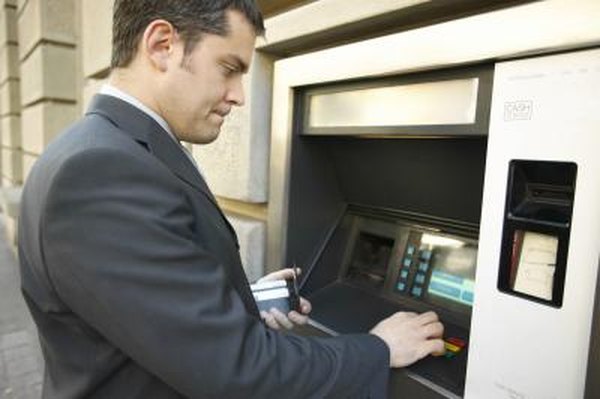How to Keep Track of Balances in a Checking Account When Using a Debit Card
Debit cards are convenient, but they make keeping track of a balance more difficult.
Hemera Technologies/AbleStock.com/Getty Images
Debit cards make purchases easier without the need to carry around cash, but tracking your spending becomes more challenging with each card swipe. Joint accounts cause more difficulty in managing balances with two debit card users. Monitoring debit card use gives you a better sense of your available balance to avoid overdrawing your bank account. A system to track debit card spending also helps keep your budget under control. Choose tools that work with your general budgeting and accounting method for the best results.
Save receipts from every purchase made with your debit card. Store the receipts in a dedicated envelope or file at the end of each day.
Step 2Enter the purchases into a money tracking software program or spreadsheet. Enter other money spent, such as cash withdrawals or bill payments to keep an up-to-date balance.
Step 3Set up an online banking account with your bank or credit union. Compare your spreadsheet or money tracking software with the online banking system. These systems are typically updated in real time, although some debits take longer to clear than others. By comparing the receipts with the online banking system, you are able to determine which debits have cleared.
Step 4Sign up for alerts when your bank account drops to certain levels if your financial institute offers them. The alerts serve as a backup in case you forget to track all of your debit spending.
Step 5Download a mobile phone app that tracks your spending. Examples include Mint, Xpenser and PocketMoney. Enter purchases into the mobile app as you make them to keep a real-time record of the bank account balance.
References
Tips
- Communicate with other users on the bank account about debit card use. Track everyone's spending to avoid overdrafts.
Writer Bio
Based in the Midwest, Shelley Frost has been writing parenting and education articles since 2007. Her experience comes from teaching, tutoring and managing educational after school programs. Frost worked in insurance and software testing before becoming a writer. She holds a Bachelor of Arts in elementary education with a reading endorsement.

